
In the Carpathians, the “shepherd’s summer” has begun that lasts from May to September. Shepherds – as herders are called here, led their flocks to high-mountain meadows – polonines. There they will spend six months – right up to the first snow.
A shepherd with a flock of sheep, guarded by a shepherd dog, descends along a mountain path to the place of spending the night. They spent the whole day in the mountains. But it is too early for the shepherd to rest – there is still a lot of work ahead.

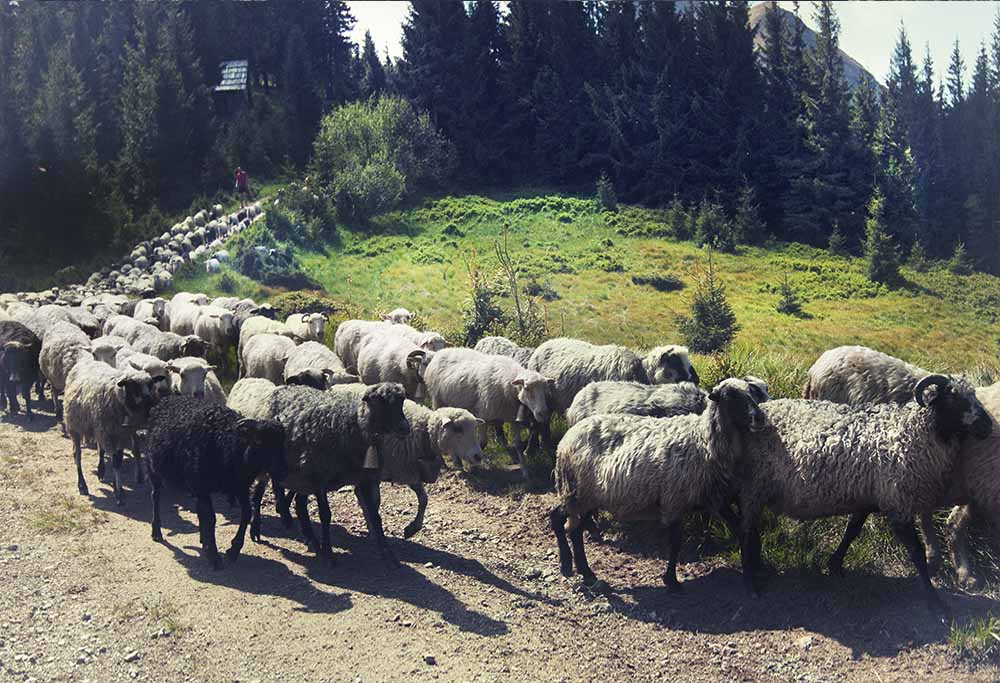
To feed a large flock of sheep, which may include a thousand of animals, it is necessary to climb high into the mountains, as there are not enough pastures on the plain. After Easter, the shepherd gathers the herd and climbs with it to the polonines – areas free from forest covered with thick and lush grass in the Carpathians near the peaks and ridges.
The flock grazes all summer long on the Carpathian polonines, which are located at an altitude of 1600 m above sea level and above. The animals scattered along the slope and only their bleating, ringing of bells on their necks and barking of dogs are heard.

For the village, this is always an important event. All residents gather to celebrate the reunification of the livestock into a large flock, and see off the shepherds with the flock of sheep to the polonines. This holiday is called “Exit to the polonine” and is accompanied by cheerful folk festivals, songs and dances, the sounds of trembita. According to the custom, the band of the holiday – the main shepherd – opens the event by lighting the Poloninskaya fire – a big fire, a symbol of the beginning of the shepherds’ exit to the polonines. Fire drives away evil spirits and helps to increase milk production. These traditions have been preserved since the times of paganism and people invariably follow them.
Sheep huddle together and it seems that they themselves already know the way.


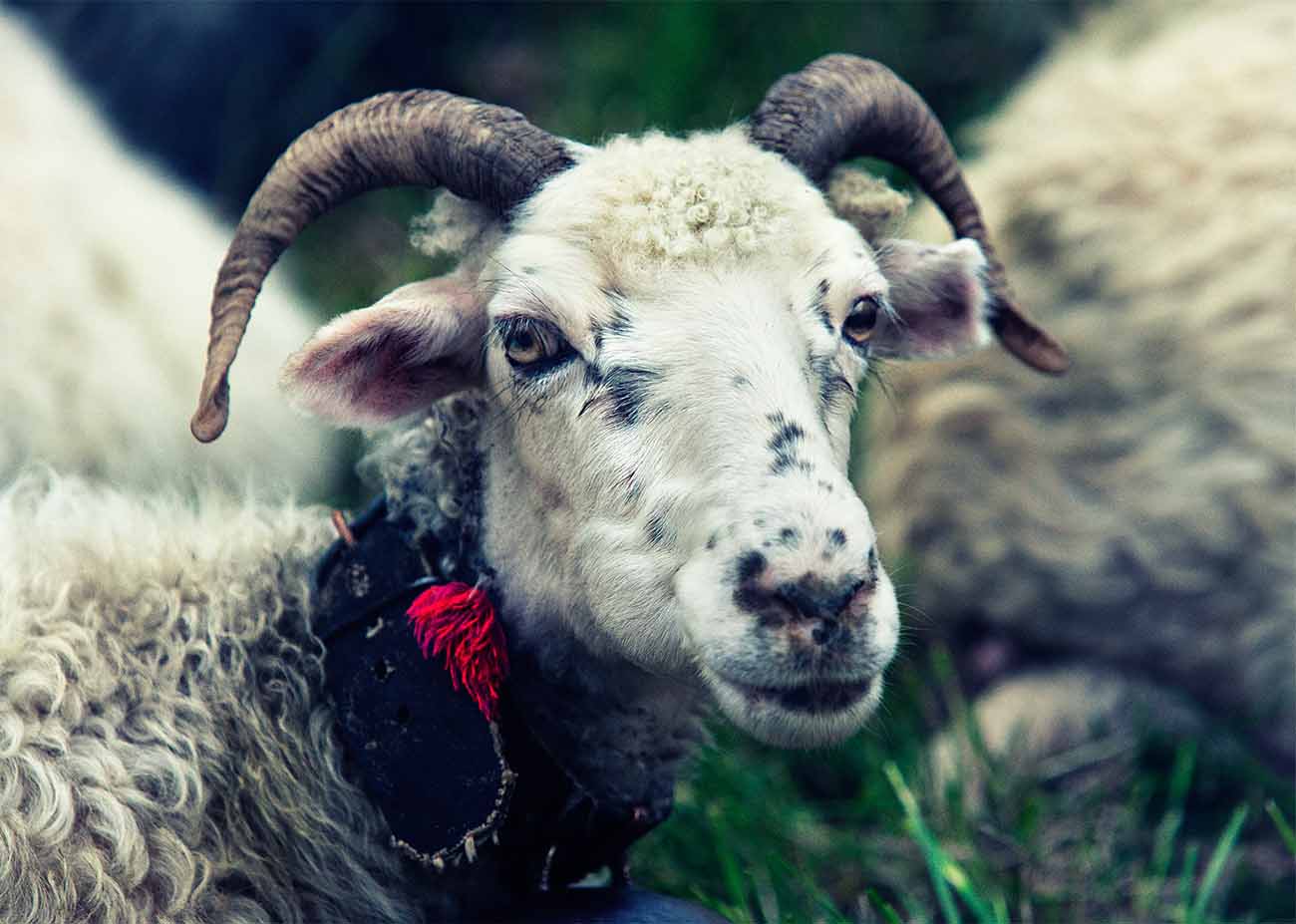
Sheep breeding is one of the most ancient professions in the Carpathians, which has survived to this day. It is difficult to imagine a Hutsul without sheep. This occupation is not taught in special institutions, the profession with its secrets was passed down from generation to generation, from father to son. This occupation has always been attractive with its romance and the opportunity to be free, because the mountains are another dimension where you are outside the hustle and bustle of everyday life. The shepherds themselves say that sheep breeding is an occupation for the soul and a favorite thing. Although they do not deny that being a shepherd is hard work, which not everyone can do.
To be able to vouch for the flock, one must be physically strong and hardy, be able to live in harmony and be able to withstand work in difficult conditions – domestic and climatic.
Today, more and more young people are abandoning the shepherd’s life in the mountains – they prefer studying. The work of a shepherd is hard, their fathers and grandfathers were not afraid of it, they could not imagine their life without mountains and flocks. For shepherds, being close to their flock is a part of life and the main source of food.
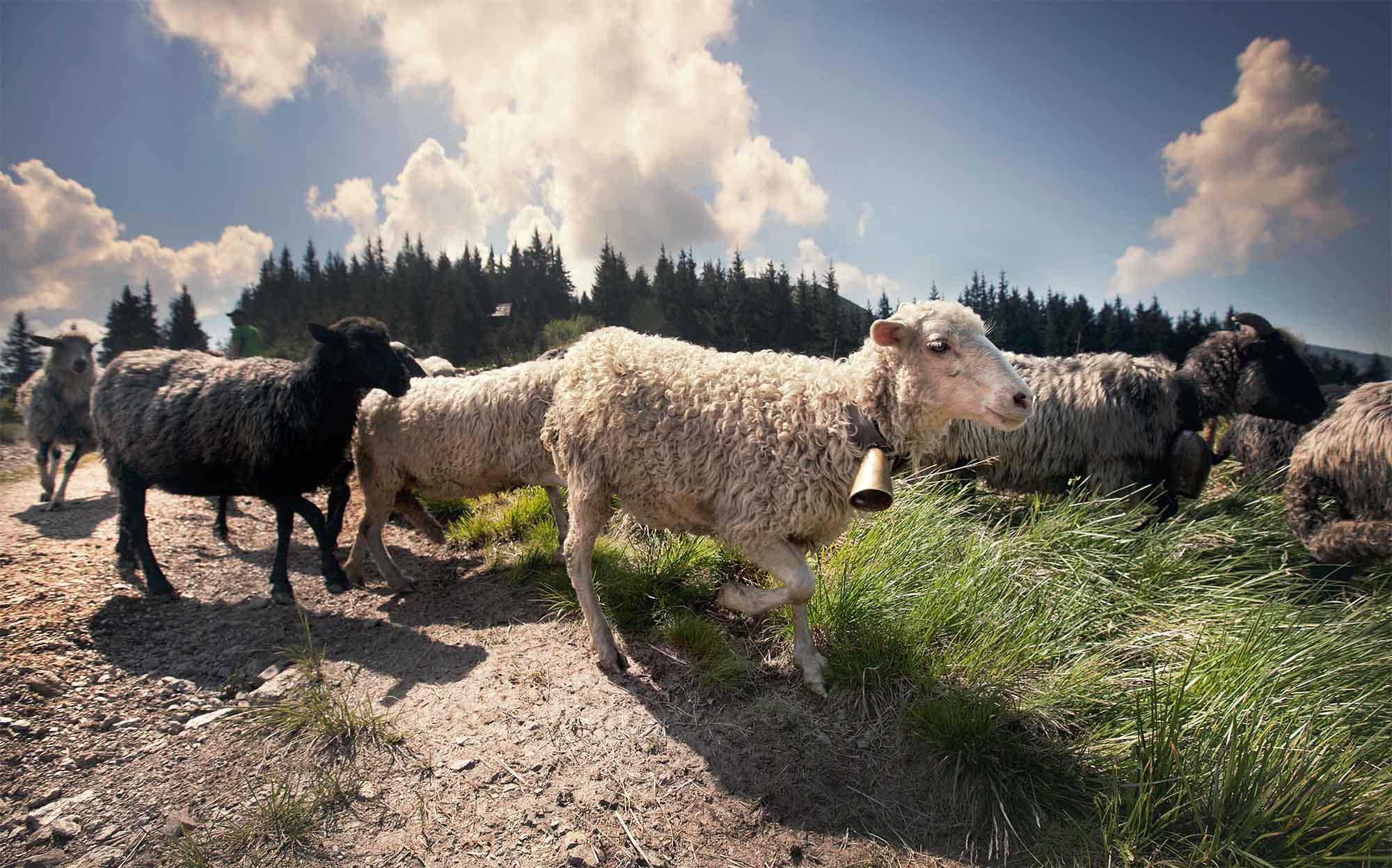
A flock of sheep in the polonine. There is a bell on the neck so that you can hear an animal that is lost or strayed from the herd.
The distance to some polonines is 50-70 kilometers, and the flock has to be driven for almost a day. About 400 sheep graze on this polonine. They are looked after by four shepherds and two assistants. The youngest is 11 years old. The shepherds do not sit still, they are constantly on the move and wind up along the polonine for 30 km. They don’t really look at age here – no one gives concessions to anyone, everyone is in business, the distribution of duties is verified by traditions.
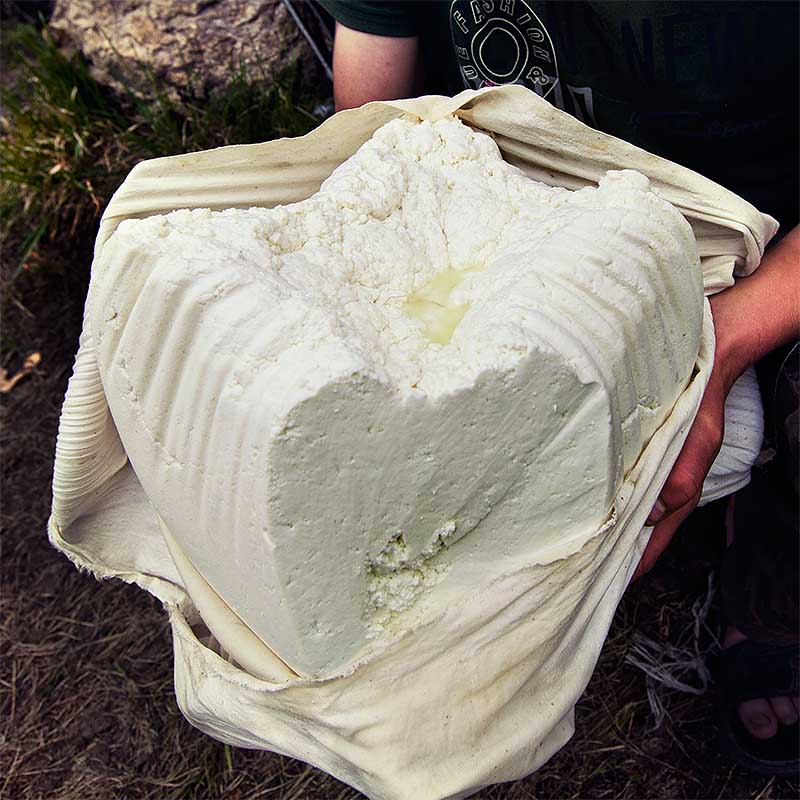
If you drive through the Hutsul villages, you will see several sheep in the fences in winter, chewing food. At the beginning of the season, from 3 to 5 sheep are driven out for grazing from each yard. On average, over the summer, each animal owner receives 55-60 kg of cheese.
As the shepherds assured me, they know each sheep and goat by name, wool coloring and special signs. At the same time, it is believed that the bells on the neck of animals not only help to find them in the fog, but also drive away evil spirits. The weather in the mountains is unpredictable – it’s sunny now, but in 5 minutes clouds can roll in and a thunderstorm with lightning can begin. Closer to autumn, the slopes are covered with “milk” – thick fog, in which it is very easy to get lost.

The flock is driven from the polonine to do milking. They already know the way, are well-trained and run there themselves. The flock stands in a special paddock – a territory fenced with branches and trees.
Six dogs help shepherds to graze sheep, without them there is no way here. It seems that the dogs themselves understand where it is necessary to drive the sheep in time, deftly understand the commands. Sensing wolves, they raise a terrible noise and bark, and thereby drive away predators. Sometimes a dog cannot be distinguished from a sheep in size and color – special breeds of shepherd dogs were bred so that they looked like sheep and did not stand out from the herd. In this case, the wolves have to be wary of all flocks.
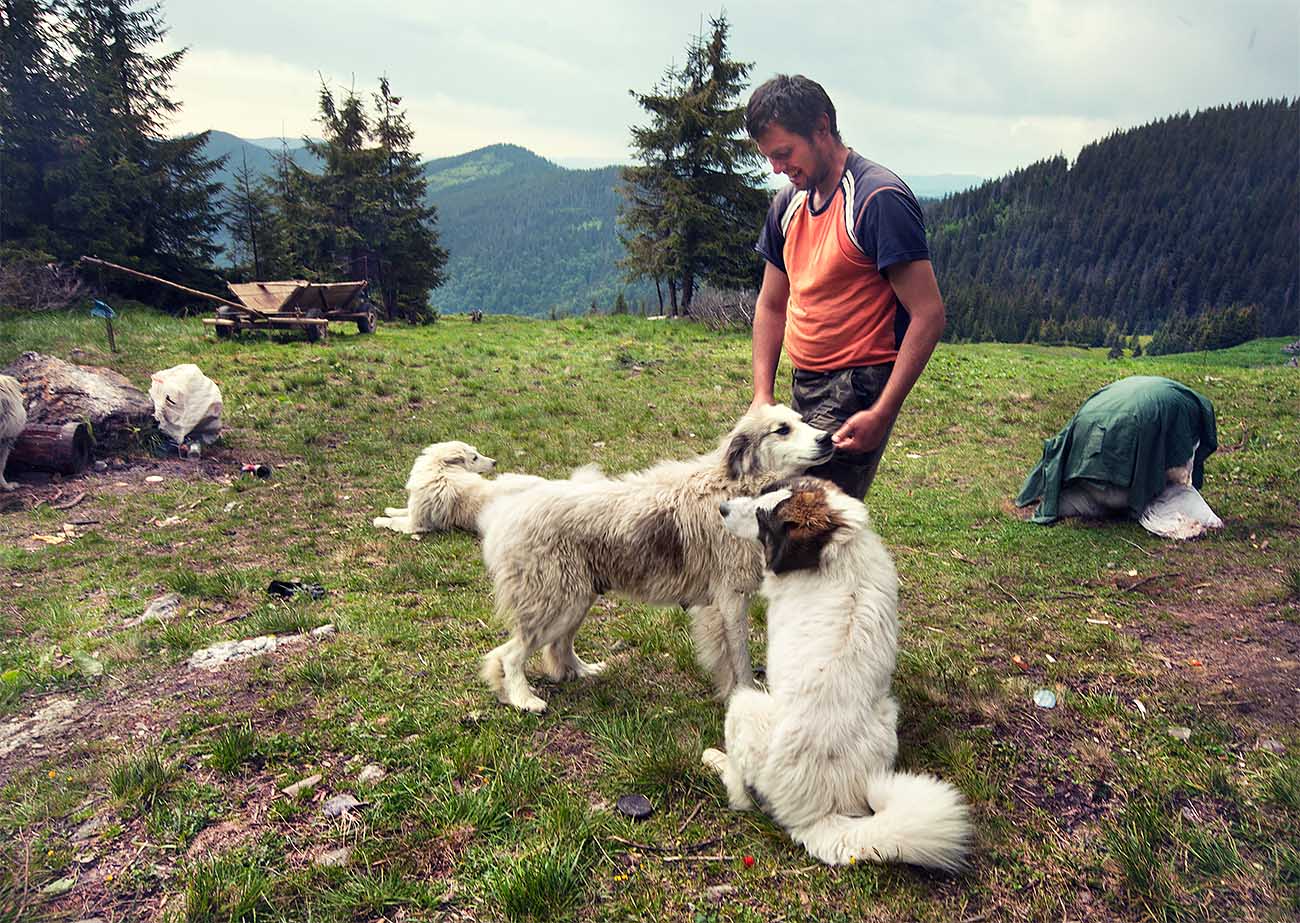
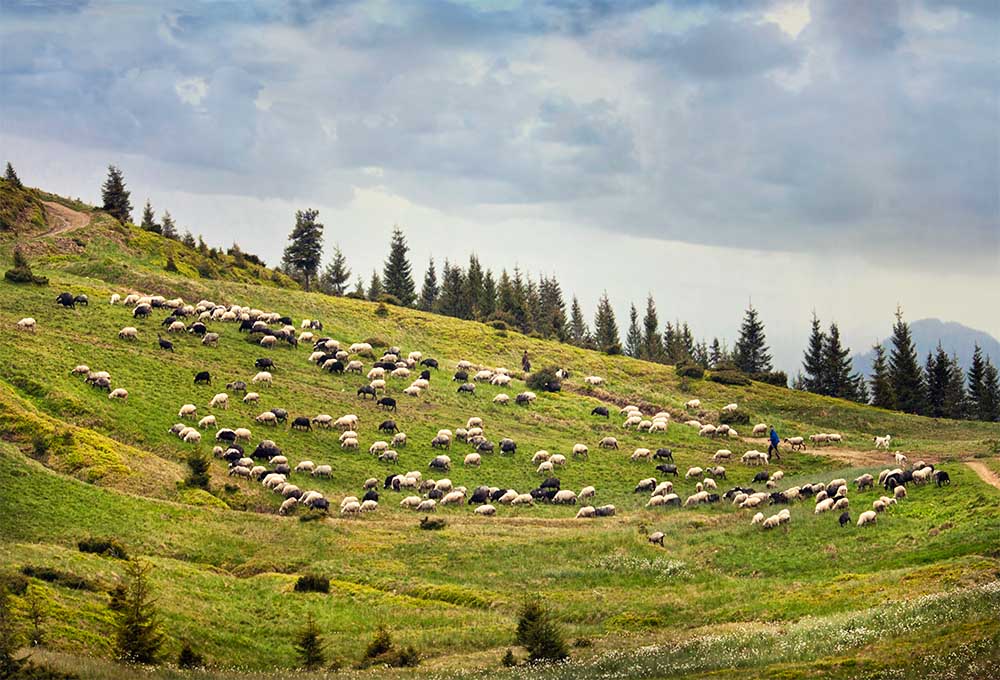
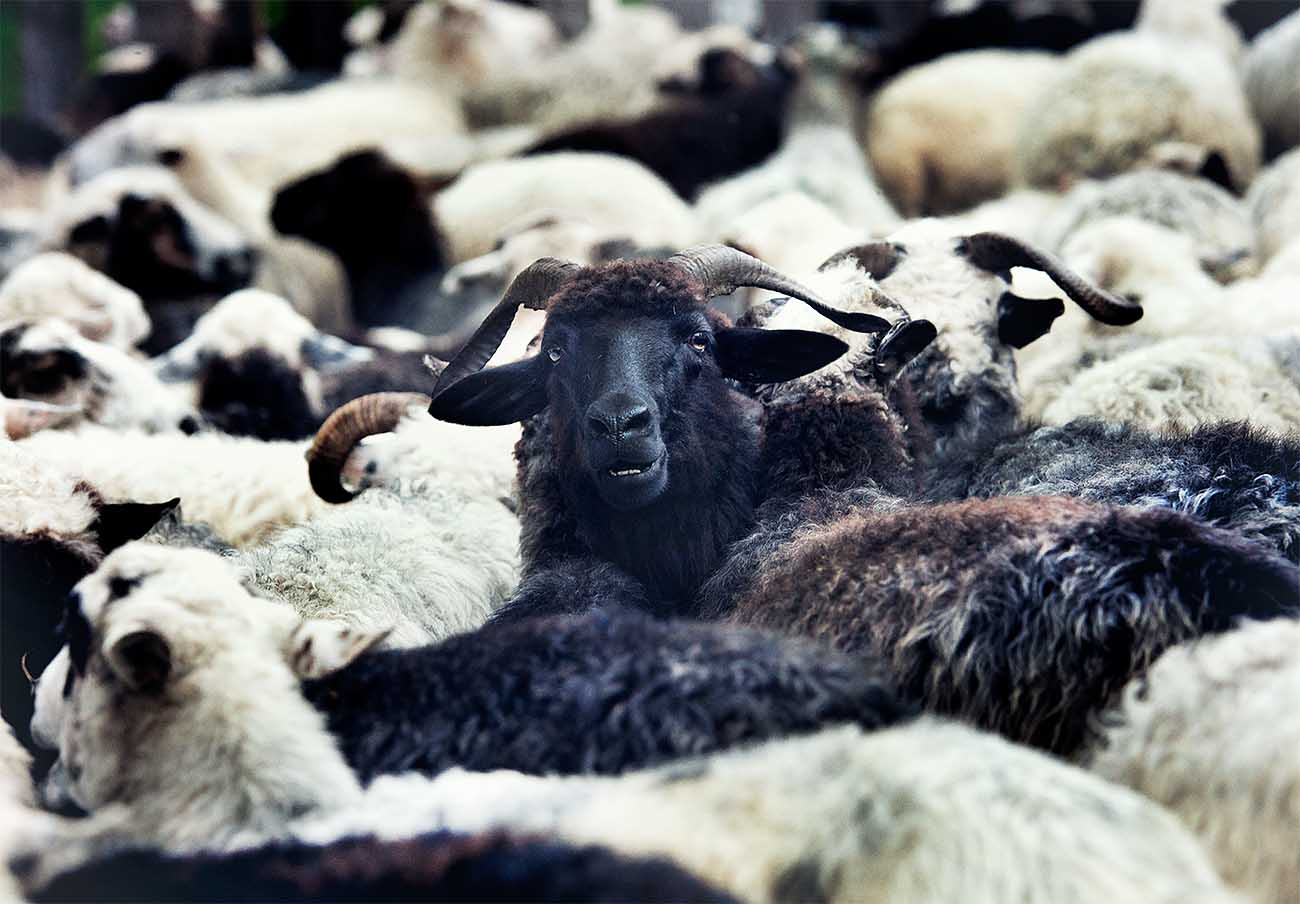
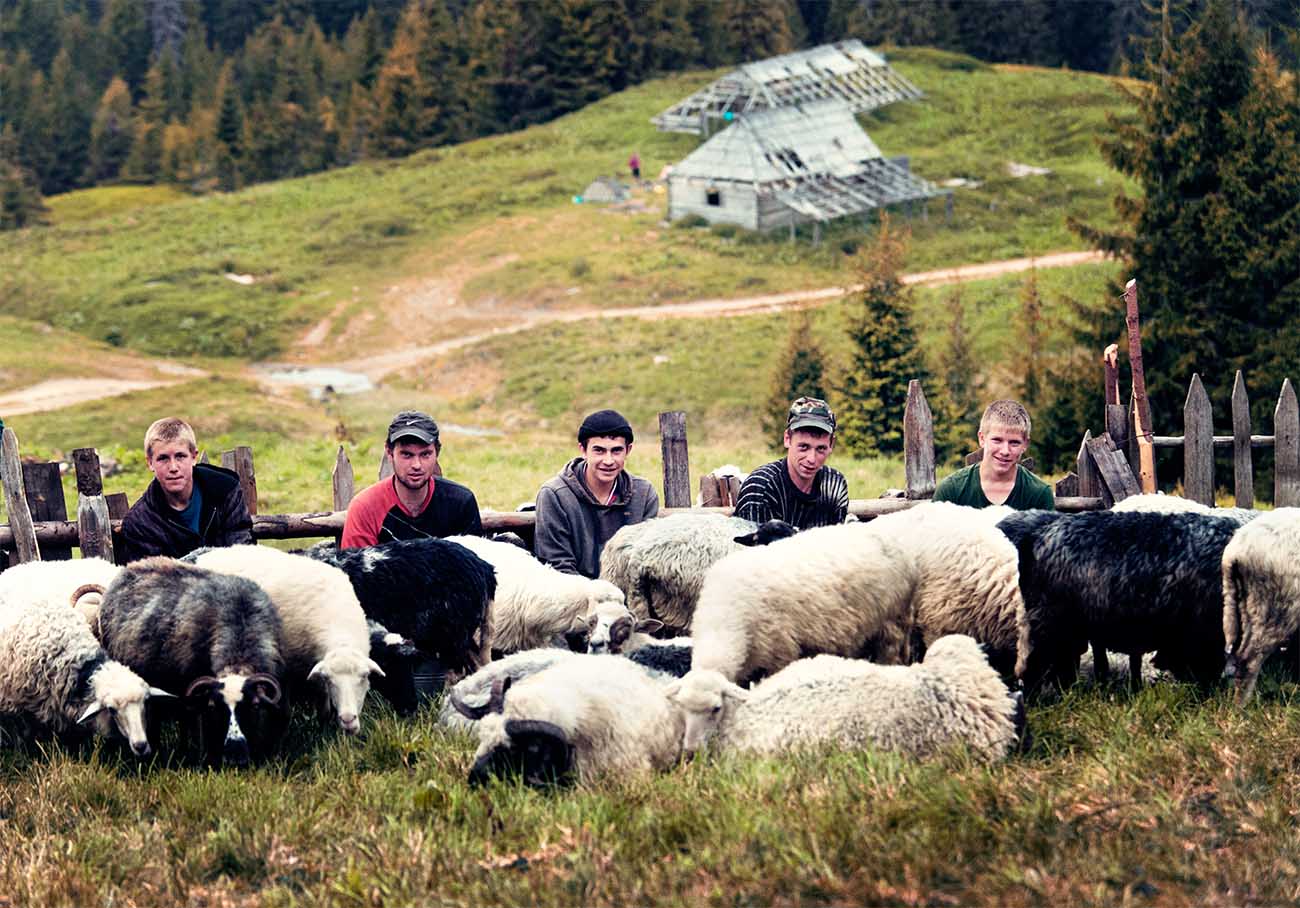
After returning to the place of overnight stay, the flock is placed in a paddock. The milking process begins. Imagine that you need to milk 400 sheep in 1.5-2 hours. Each sheep gives a little milk – up to 250-350 grams at a time. You can hear streams of milk hitting a metal bucket.
The sheep are waiting for their turn to be milked. They are tightly huddled together and are looking forward to when they can run out to freedom and chew grass. During the day under the sun in their warm fur coats, the sheep heat up so much that if you squeeze into the herd in the evening, you will feel living solar energy coming from them and steam rising.
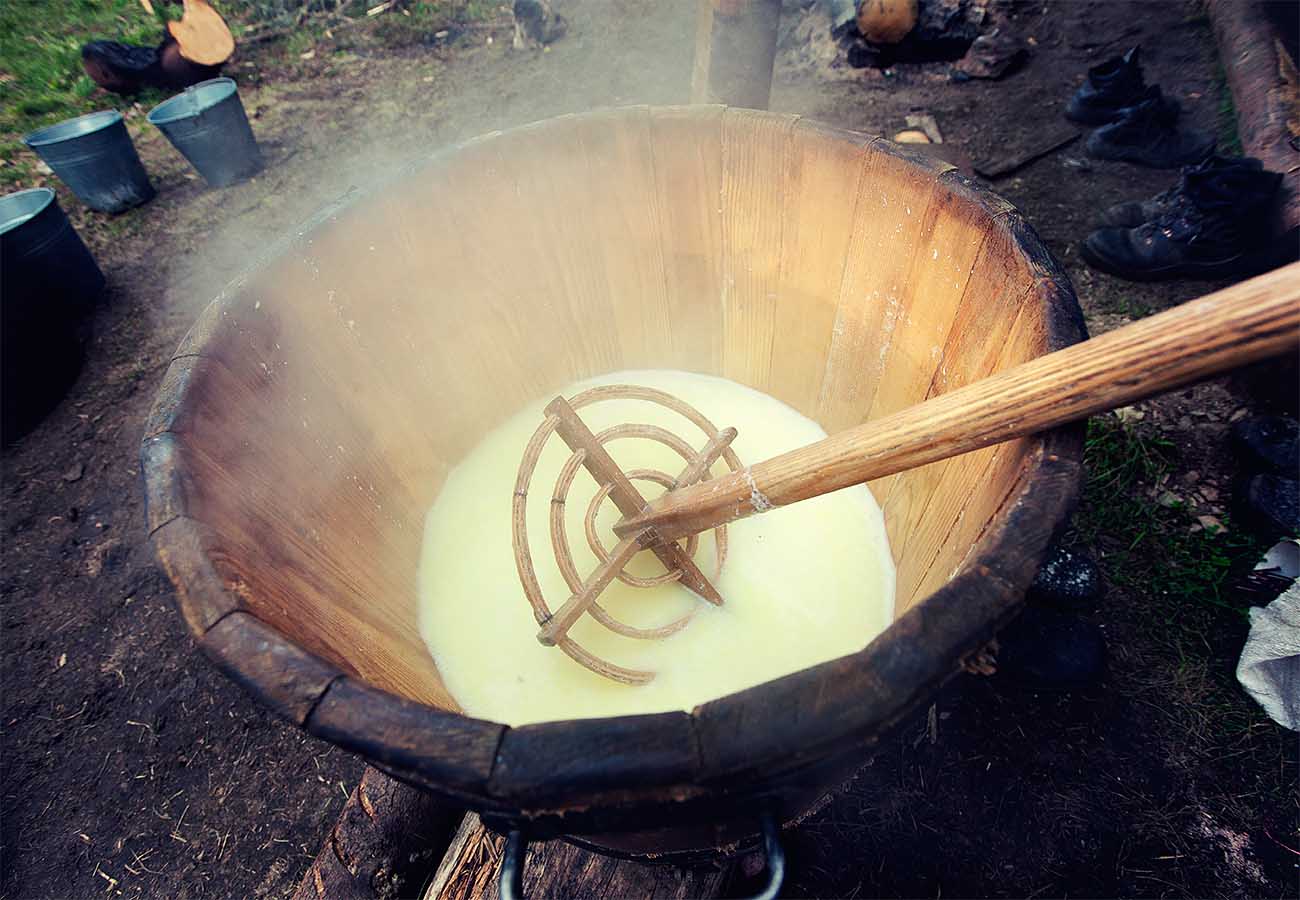
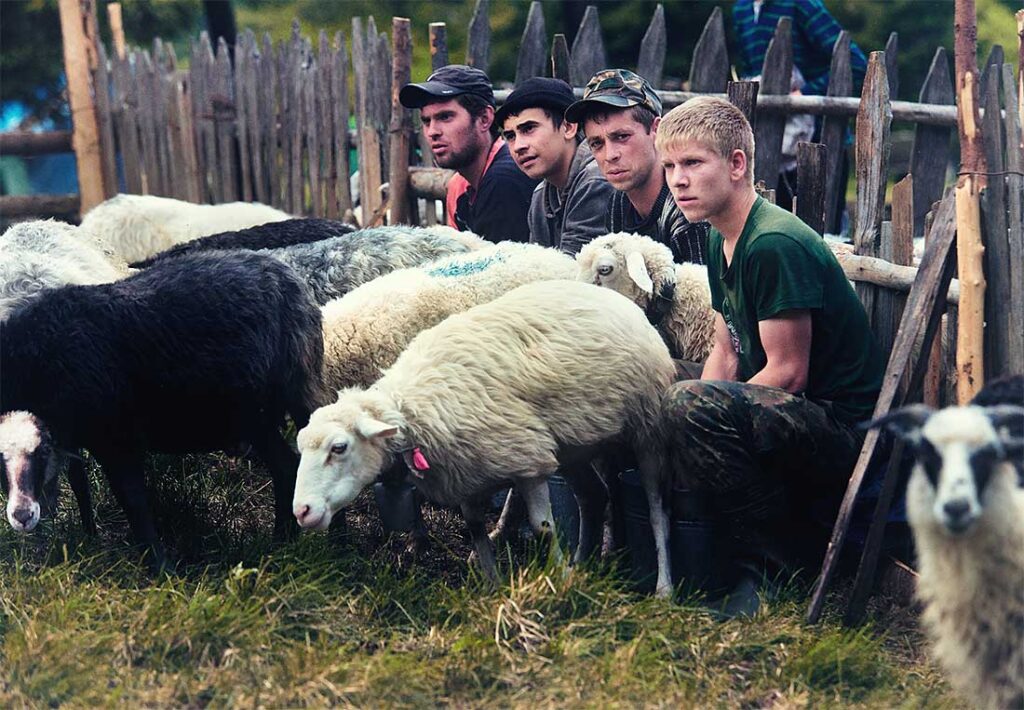
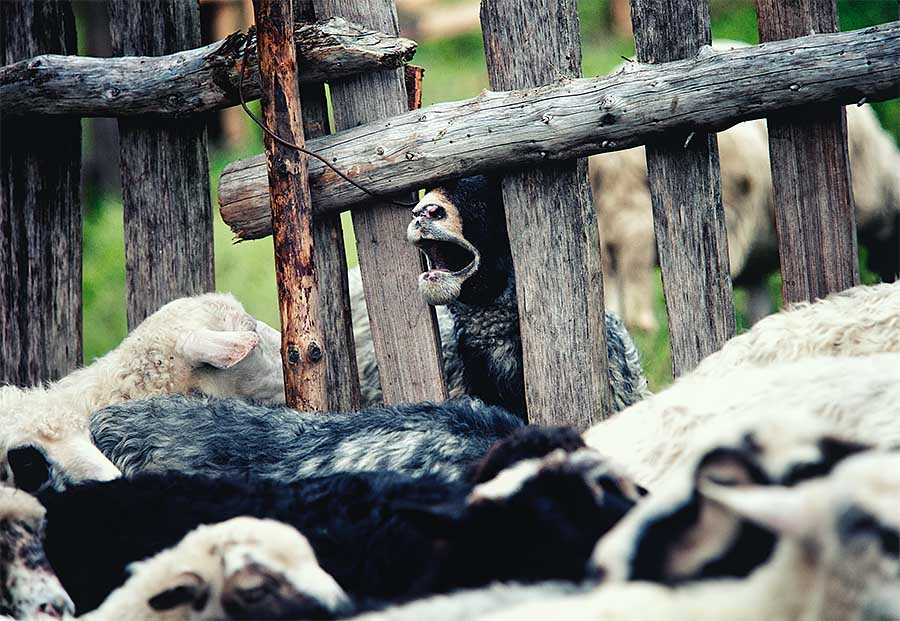
One shepherd drives the sheep, others milk them, sitting in a row. Animals obediently stand, they are accustomed to the daily ritual.
Sheep milk is measured in ‘helets’. One helet is about 12 liters, from which up to 3 kg of cheese can be made. Cheese making in the mountains is a responsible, difficult and traditionally masculine occupation.
Women are not entrusted to do it, and to remove cheese in such quantities, you must be extremely strong. Local shepherds joke, saying: ‘Cheese is like a woman – she is tender, so men’s hands are needed here’.
After all the milk has been collected, it is placed in a special wooden container near the fire so that the milk becomes warm. To prepare 10 kg of cheese – as it is also called ‘white gold of the Carpathians’ – you will need milk from 200 sheep. Klyag, or rennet, is added in warm strained milk.
This is a special enzyme that is extracted from the stomach of a lamb that has not yet tasted fresh grass, only mother’s milk. Then the vats are put on fire and boiled, stirring with a special wooden stick. When clots of cheese begin to appear, they are collected and formed by hand into large breasts.
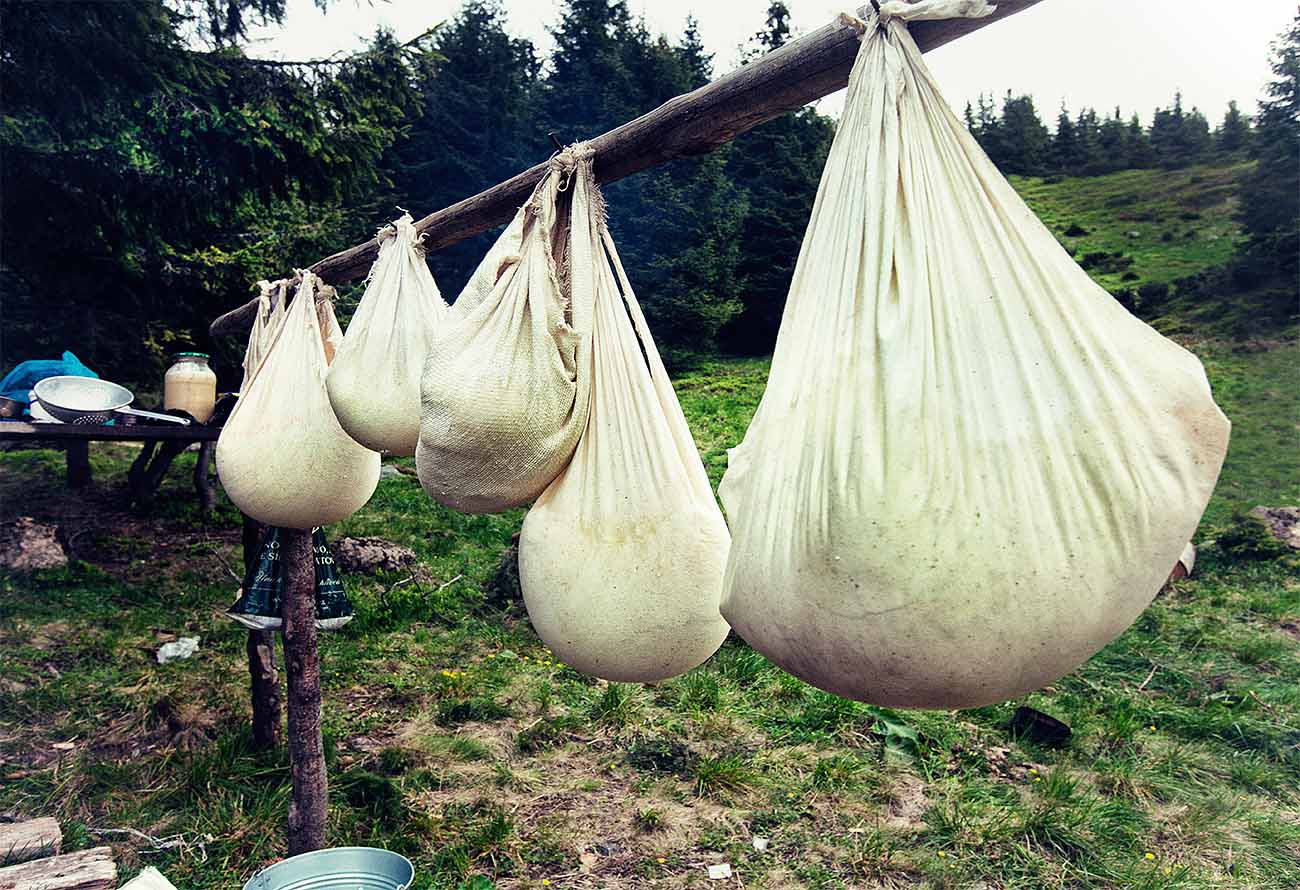
The collected clots are hung in a warm place to drain. Large budzas – heads of fresh cheese weigh 10-15 kg each. Bryndza is then prepared from budzas – after a week’s “rest” budza is rubbed with salt and butter. This is how fresh, fragrant cheese is obtained, after tasting it, you will never want to buy store-bought again.
Budz, feta cheese and vurda are types of sheep’s cheese. They differ in color, taste, structure and technology of preparation. Cheese making is a real art.
The serum that remains in the vat is poured into a huge cauldron and put on a small fire. Some milk is added to it. This is how another delicious cheese product is born – vurda, the second cheese. It is also called the Italian word ‘ricotta’. This cheese is much softer, its taste is less pronounced, and the consistency resembles a thick cream.
When the shepherd opens the wurda prepared by his hands, you understand that you have witnessed something unusual. I want to break off a piece and try what happened. At such moments, you yourself want to become a shepherd.
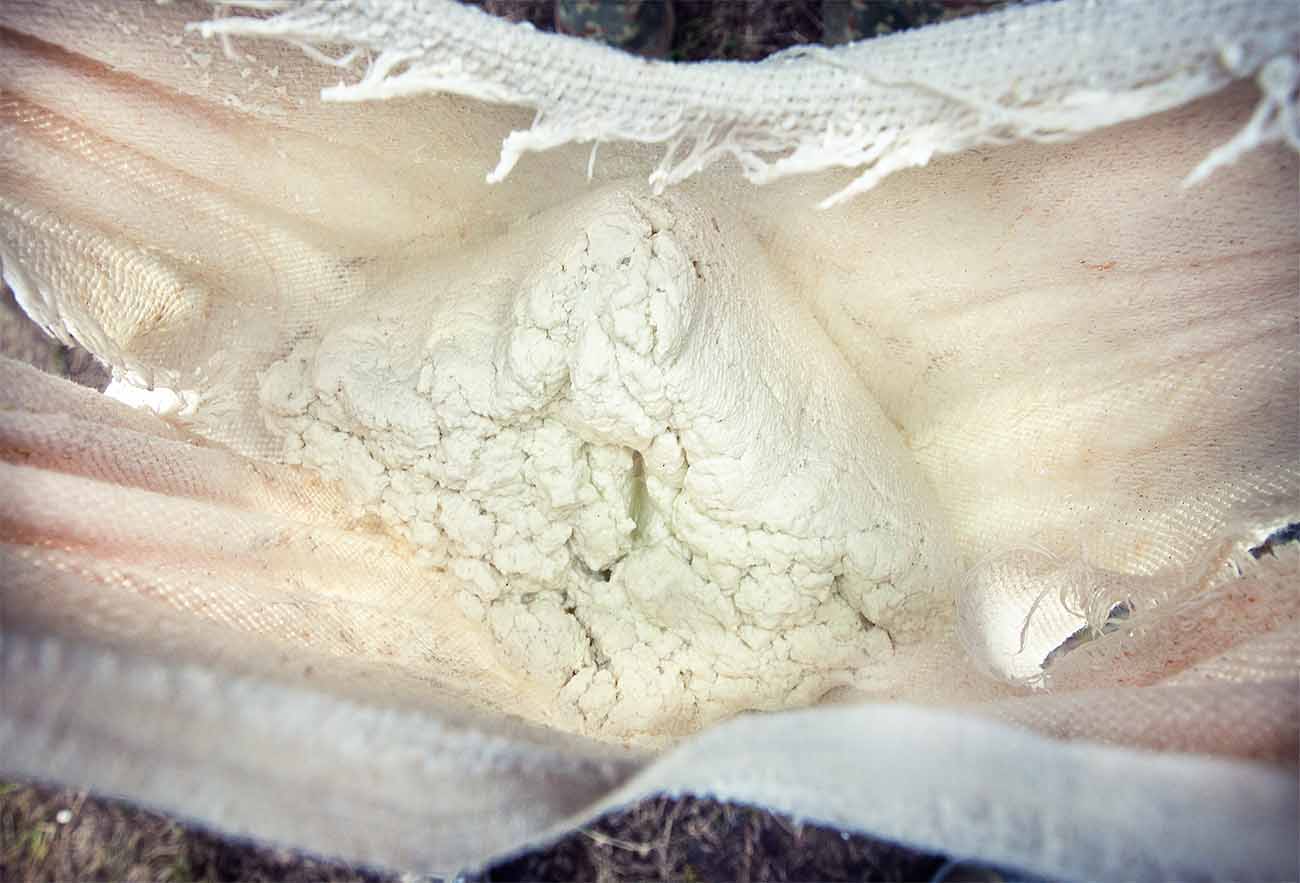
Bryndza is the most important component of Ukrainian, Romanian, Bulgarian and Moldavian cuisine. As a rule, bryndza is put in various salads and soups, in meat dishes, as a filling in dumplings and pies, and an exclusive Carpathian dish is hominy with onions and cracklings, which is abundantly sprinkled with bryndza. We even have an annual festival dedicated to cheese in Transcarpathia.
At the end of the grazing season, the shepherds, together with their flock, descend from the mountains and return home. They are joyfully met and a holiday of farewell to the meadow is arranged – farewell to the mountains, pasture, margin – this is how the Hutsuls have long called cattle.
Evening in the mountains comes quickly. When all the work is done, shepherds gather under a small shed, hut or kolyba, where they spend the night and rest by the fire. The conditions are Spartan, the life of modern shepherds does not differ much from the life of their great-grandfathers. Yes, and mobile communications here began to catch quite recently. At the end of a hard day, wooden flooring will seem soft.
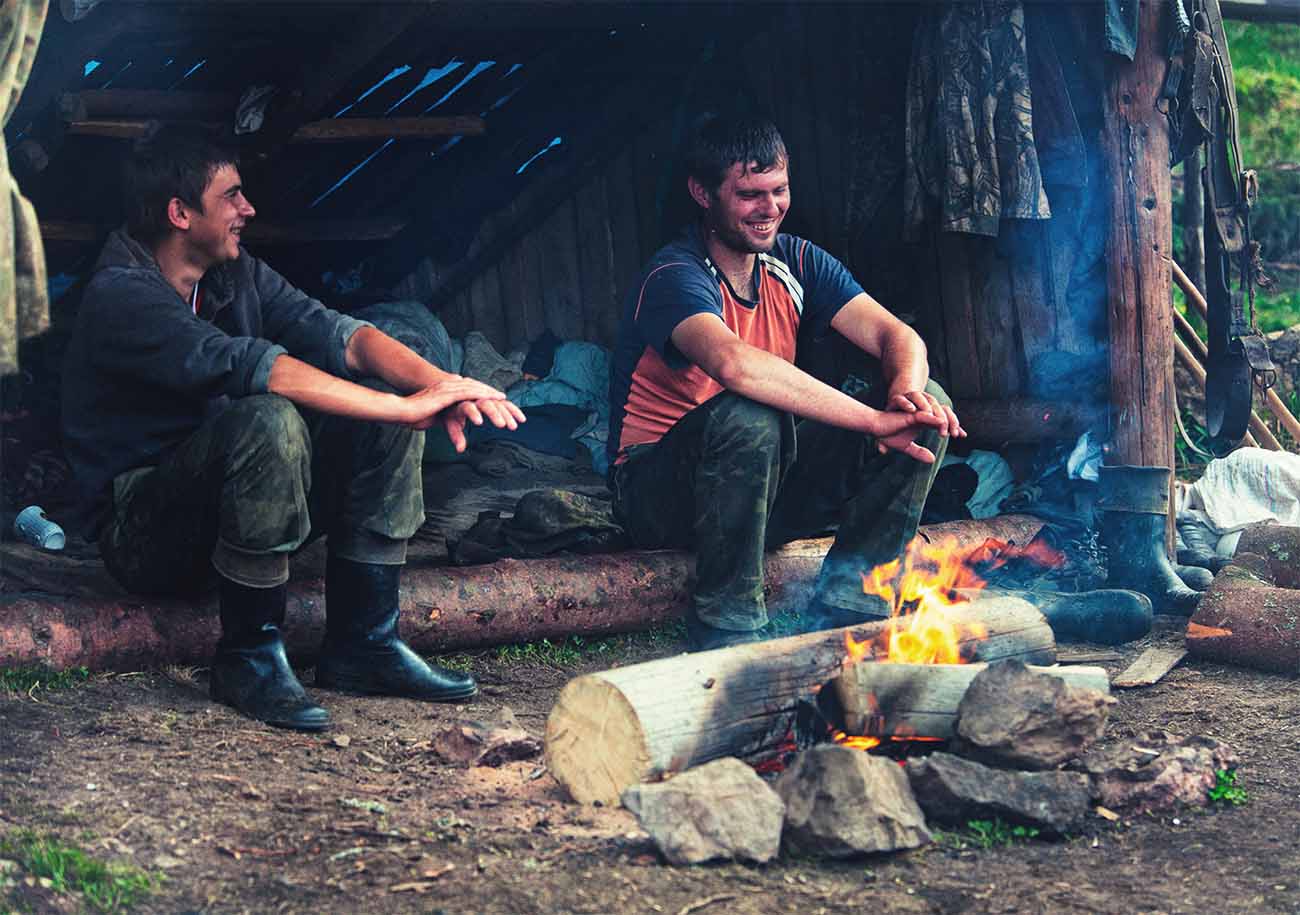
Half an hour after we met, shepherds at the fire begin to tell different legends and life stories: about how often they have to protect the herd from the attacks of wolves, whose population has increased greatly over the past couple of years, what troubles they got into and about the life they left down there, at the foot of the mountain. Shepherds do not stay up late, because tomorrow they will be very happy. Relatives rarely visit, even less often than tourists.
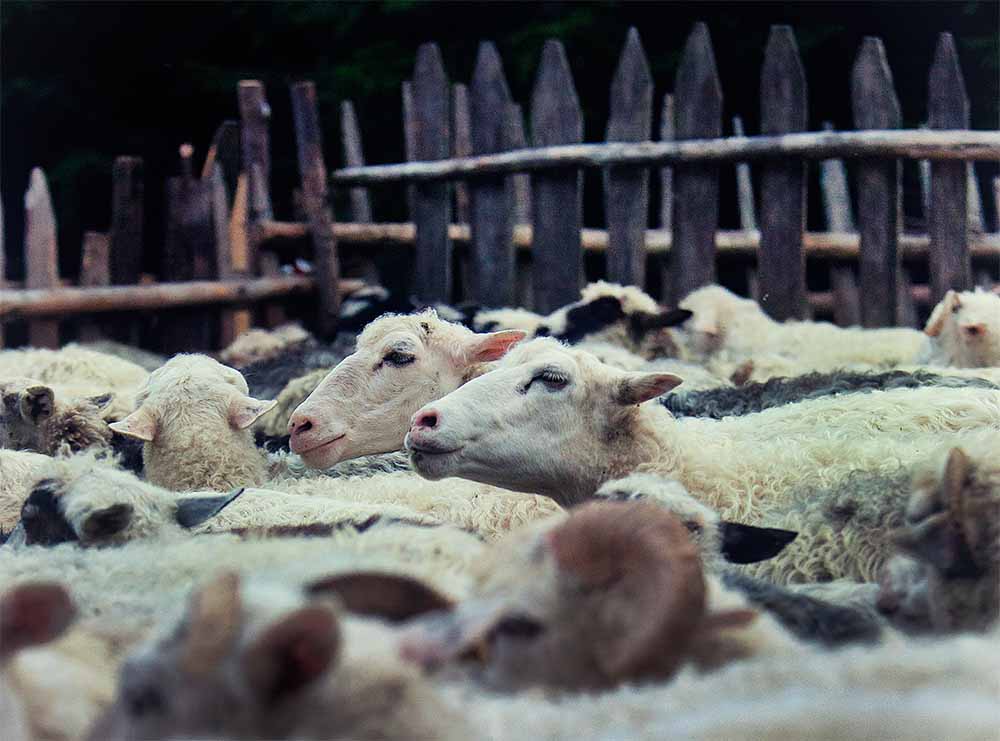
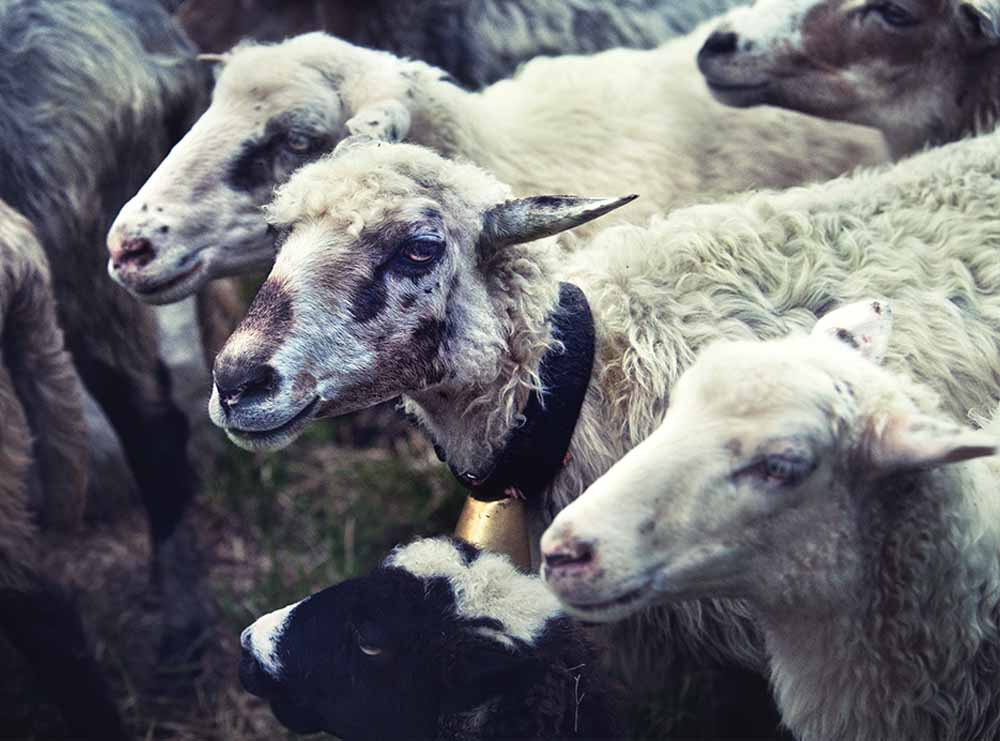
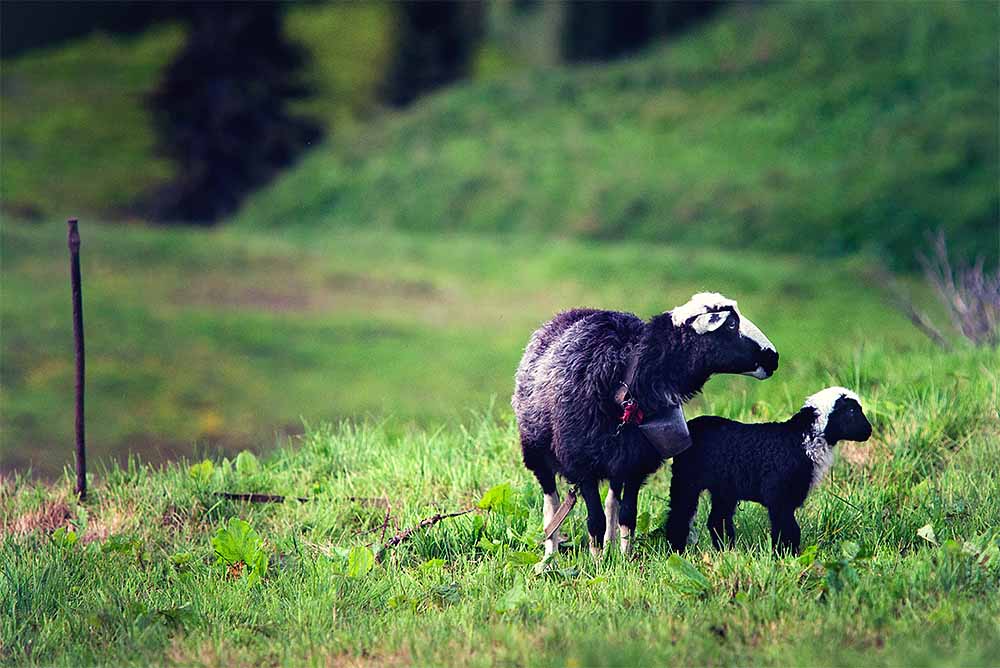

The fire burns all night. One of the guys is on duty and must keep the fire going all the time. Meanwhile, the flock is resting peacefully after a long day on the polonine and a long haul. The dogs protect the herd from the wolves that lurk in the forest. Tomorrow will start all over again.
I am glad that I was lucky to touch the centuries-old traditions and see with my own eyes, perhaps, the last primordial mountain shepherds.